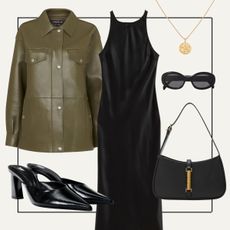I Spoke to the Piercing Experts, Everyone Is Asking For These 13 Ear Piercing

Full disclosure: I write this ear piercings story as someone who only has their ear lobes pierced. I have three on each ear, and yes, my first lobe piercing was done at Claire's Accessories when I was 10. Okay, I also had my third lope piercing done there too (yes, it was recently—I'm there for the nostalgic Y2K beauty vibes, OK?). While I love experimenting with multiple lobe piercing combinations—I love a stud, huggie earring and larger chunky hoop earring combination—I'm tempted to get other areas of my ears pierced. But beyond the lobes, I'm kind of clueless on what ear piercing is. So when this article was assigned to me to write, I felt it was the perfect time to step up my knowledge on all the different types of ear piercings out there and learn my tragus piercings from my helix piercings.
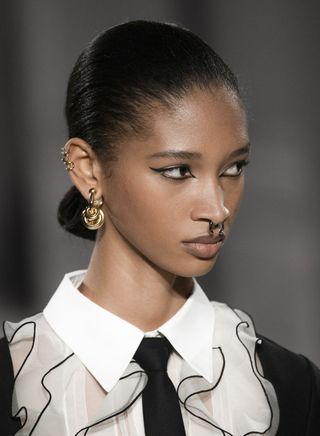
I've learnt that there are so many types of ear piercings out there. Among them, they have different piercing placements, different levels of pain (more on that below) and certain tips for aftercare too. To find out more, I reached out to three very knowledgeable ear piercers to give us the lowdown on all the different types of ear piercings. But first, there are a few pointers you should know about before considering an ear piercing.
How painful is an ear piercing?

"When it comes to piercings, pain is relative," says Yasmin Jabbar, ear piercer for Matilde. "Everyone has different pain thresholds and clients rarely have the exact same experience for most piercings. In the grand scheme of things, the actual piercing itself takes a second or two so it's absolutely manageable and worth it! I would describe it more as a hot sensation rather than pain but If you are feeling nervous or worried about the pain, let your piercer know so that can support you and explain the process to you to put you at ease."
How should you prepare for an ear piercing?
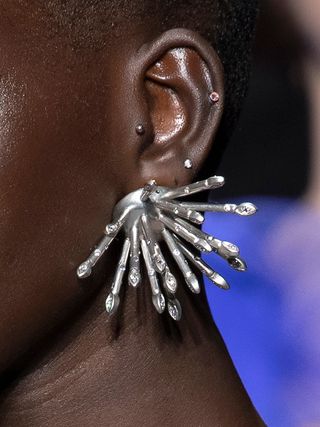
"In case you're uncertain about the earring design or type of piercing you'd like, feel free to book a consultation prior to your appointment or ask any questions on the day itself," says Svetlana Hristova, Head of Piercing at Lark & Berry. "A brief conversation with your piercer before the procedure can work wonders, particularly if you're feeling nervous."
It's also the ideal time to assess your ear anatomy, and what piercings you might want to consider in the future too. "The next step is to go to a reputable piercer and ask them whether the piercings you want will work with your ear anatomy. Let them know what future piercings you're planning so that they can pierce with that in mind," says Laura Bond, founder of Laura Bond. "If you've only got your lobes pierced then starting with a second or third lobe can be a good way to ease into the curated ear trend. Flat piercings and tragus piercings are also very cute and can take less time to heal than the helix or conch," she says.
As for the day itself, there are things you can do to make the experience as seamless and pain-free as possible. "Taking pain relief can help alleviate discomfort to a certain extent, but be aware that some painkillers may thin the blood and cause bleeding during the piercing process," says Hristova, and ensure you disclose any medications or health conditions on the consent form before your piercing. "It's essential not to get pierced on an empty stomach or after consuming alcohol," she says. "Fill out the consent form attentively, providing accurate and thoughtful responses to all questions."
To prevent infections or irritations, she also recommends avoiding getting pierced before embarking on a long journey by train or aeroplane. "Keep in mind that being in good health when getting pierced is crucial for a swift and problem-free healing process," she says. "Refrain from getting a piercing if you are pregnant, breastfeeding, or have recently undergone other procedures such as surgery or getting a tattoo in the same area."
What aftercare advice should you follow after an ear piercing?

You will want to diligently follow your practitioner's aftercare advice on the day to help your piercing heal well and avoid any issues. "The healing phase is just as crucial for achieving optimal results as the piercing procedure itself," says Hristova. "Begin using the aftercare lotion on the same day as your appointment, and we recommend doing so twice daily (morning and evening) for at least four weeks. Lobe piercings tend to heal more quickly than cartilage piercings, but there's no such thing as over-cleaning."
As well as keeping the area clean, you'll want to avoid touching your new piercing unnecessarily. "It's important to note that excessive touching or cleaning the piercing with unwashed hands can sometimes cause issues. To ensure a smooth recovery, avoid swimming pools for two weeks, although sea water is acceptable," says Hristova. You'll also want to avoid saunas and steam rooms for around four weeks.
And don't forget, you should avoid changing the jewellery in your piercing until it has fully healed. "This can compromise the health of your piercing and can lead to an infection," says Jabbar. By following these steps, you'll be on your way to a successful healing process.
Ahead, you'll find our experts sharing everything you need to know about the different types of ear piercings.
Types of Ear Piercings
1. Standard Lobe Piercing

Name of piercing: Standard Lobes
Where on the ear: The most fleshy part and the bottom of the ear
Healing time: 2-4 months on average
Pain scale: 2/10
Cost: Piercing fees range from £25-£30 per piercing
The piercing technique: As for the piercing technique, a needle is the best way to go. "Using a needle rather than a gun is important when piercing ears because it is much safer and more precise," says Bond. "Needles are designed specifically for piercing and provide more accuracy, less trauma to the tissue, and a better healing environment due to their sharpness and small size. Guns, on the other hand, can cause trauma to the tissue and increase the risk of infection."
What earrings suit this area? "Lobes = versatility!" says Jabbar. "The great thing about standard lobe piercings is you can literally wear anything in them. I love to see a chunky hoop in the first lobe, and Matilde's Lua hoops would be a great start to any stack," she says.
2. Floating Lobe Piercing
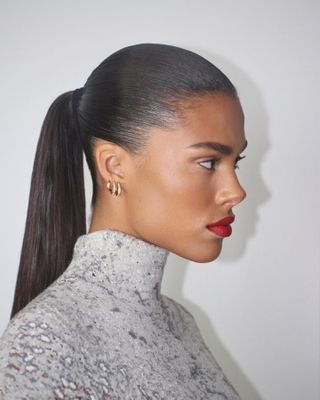
Name of piercing: Floating lobe (also goes by a "stacked lobe" piercing)
Where on the ear: A floating lobe sits on the higher or top end of the lobe, usually in between a standard first and second lobe piercing
Healing time: 2-4 months on average
Pain scale: 2.5/10
Cost: Piercing fees range from £25-£30 per piercing
The piercing technique: The piercing is typically done with a piercing gun or a needle.
What earrings suit this area? "When it comes to floating lobes, the smaller the better. I like to think of them like stars. You might not see them straight away but when you do see them twinkle they are unbelievably beautiful," says Jabbar.
3. Tragus Ear Piercing

Name of piercing: Tragus
Where on the ear: This subtle placement goes through the small cartilage flap that partially covers the ear canal
Healing time: 6-12 months
Pain scale: 6/10
Cost: Piercing fees range from £25 - £30 per piercing
The piercing technique: The piercing is typically done with a needle. "If you wear ear plugs or in-ear headphones this might not be the piercing for you unless you don't mind taking a break whilst your piercing heals," says Jabbar. "The tragus is an anatomy-dependent piercing, so you will need to consult with your piercer to make sure you can have this piercing."
There is a misconception that a tragus piercing may be painful due to its thickness, says Hristova. "In reality, since there are no nerve endings present, you will experience a sensation of pressure from the needle rather than actual pain," she says. "Some mild swelling and soreness may follow, but this typically subsides within a few days."
What types of earrings suit this area? "The tragus piercing is one of the smaller ear piercings. Thus, it's advisable to select a more delicate, petite earring for the initial piercing, with the option to switch to a larger one later on," says Hristova. "You could also consider a 1.2mm gauge hoop, with a diameter ranging from 6mm to 8mm, depending on your tragus size."
"For a unique alternative to the classic mini stud, you could explore slightly larger crescents or bars. Current trends also feature studs with dangling chains or mini hoops adorned with charming little pendants for a statement look. The double tragus piercing, also known as the snake bite, consists of two vertical small studs that resemble a snake bite and offers a cool aesthetic," says Hristova.
4. Flat/Scapha Piercing
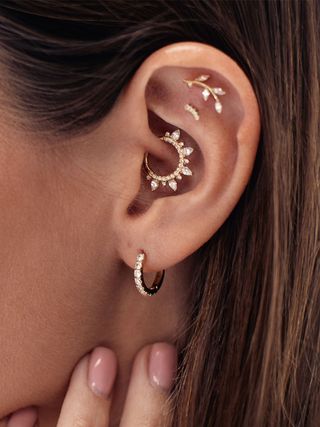
Name of piercing: Flat (it also goes by the name of a flat helix or scapha)
Where on the ear: The flat surface at the top of the ear
Healing time: 6-12 months on average
Pain scale: 6/10
Cost: Piercing fees range from £25 - £30 per piercing
Piercing technique: This area is pierced with a needle.
What types of earrings suit this area? "This piercing placement is a focal point so it deserves to be paired with a show-stopping piece of jewellery such as Mathilde's Trio Labret," says Jabbar.
5. Forward Helix Piercing

Name of piercing: Forward Helix
Where on the ear: At the front of the top of the ear, right where your baby hairs sit
Healing time: 6-12 months on average
Pain scale: 7/10
Cost: Between £25-£30
The piercing technique: This area is pierced with a needle. "The forward helix piercing is an anatomy-dependent piercing, you will need to consult with your piercer to make sure you can have this piercing," says Jabbar.
What types of earrings suit this area? "I like to see something dainty in this piercing as it's a small area. Matilde's solo labret would be a perfect fit for this placement," she says.
6. Helix Piercing
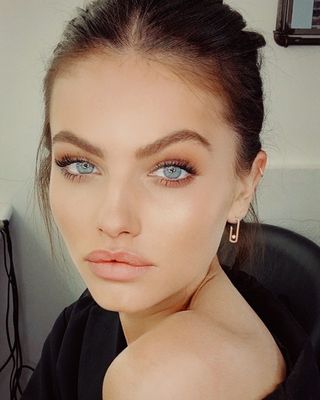
Name of piercing: Helix
Where on the ear: On the outer edge of the top part of the ear
Healing time: 6-12 months on average
Pain scale: 5/10
Cost: Piercing fees range from £25 - £30 per piercing.
Piercing technique: This piercing is done with a needle. " If you wear a cycling or motorcycling helmet this might not be the right piercing for you unless you don't mind taking a break for a while. Ski-ing would also be a no-no for at least a few months," says Jabbar.
"Be cautious not to change the earring or downsize the bar prematurely, as the cartilage inside may appear healed but can still be damaged," says Hristova. "Patience is essential to avoid infections from improper cleaning routines or excessive touching and movement of the earring. It's important to never leave your helix piercing without an earring, even for short periods, as the healing process will begin immediately and the hole may close up overnight," she says.
What types of earrings suit this area: "A standard helix piercing can be very versatile," says Jabbar. "Hoops are alway a good look, and huggies look stunning in a helix piercing. Studs can also be a great styling option and Matilde's triple gem stud would look stunning as the curvature of the diamonds would compliment the curve of the helix perfectly," she says.
7. Industrial Piercing

Name of piercing: Industrial piercing
Where on the ear: An industrial piercing is essentially a forward helix and standard helix piercing joined together
Healing time: 6-12 months on average
Pain scale: 5/10
Cost: Piercing fees range from £25-£30 per piercing
Piercing technique: This area is pierced with a needle. "The industrial piercing is an anatomy-dependent piercing. I prefer piercing the forward helix and standard helix separately with labrets to allow them to heal a lot easier, fitting the bar or chain at a later date," says Jabbar.
What types of earrings suit this area: "The most traditional jewellery used for an industrial piercing is a long bar that joins piercings together. However, I love to fit each piercing with small hoops whilst linking them together with a chain. This adds texture and puts a more dainty spin on a very statement piercing," says Jabbar.
8. Auricle Piercing

Name of piercing: Auricle (or Lower Helix)
Where on the ear: On the outer edge of the middle part of the ear
Healing time: 6-12 months on average
Pain scale: 4/10
Cost: Piercing fees range from £25-£30 per piercing.
Piercing technique: This area is pierced with a needle.
What types of earrings suit this area? "A low helix looks stunning doubled up with two piercings," says Jabbar. "Known more often as the snake bite, this placement is perfect for two small studs or two plain gold hoops—an effortless but well-curated addition to any stack."
9. Rook Piercing
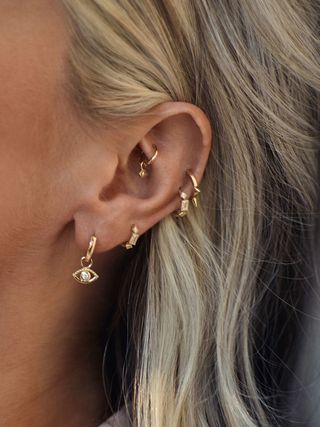
Name of piercing: Rook
Where on the ear: Inside the ear, above the daith and next to the forward helix
Healing time: 6-12 months on average
Pain scale: 6/10
Cost: Piercing fees range from £25-£30 per piercing
Piercing technique: This area is pierced by a needle. "The rook is an anatomy-dependent piercing, you will need to consult with your piercer to make sure you can have this piercing," says Jabbar.
What types of earrings suit this area? An oval-shaped hoop specifically made for rook piercing is a great choice as these hoops sit flat against the rook and are really comfortable to sleep with. The traditional curved barbell can also be a great way to style a rook piercing!
10. Daith Piercing
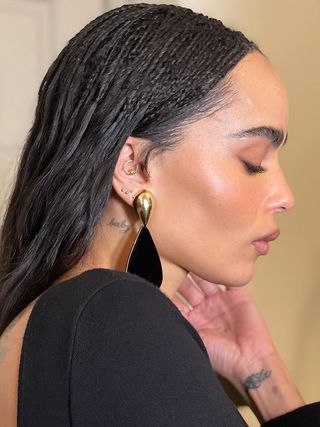
Name of piercing: Daith
Where on the ear: Quite far inside of the ear, the daith small part of cartilage above the ear canal, between the rook and tragus.
Healing time: 9-12 months on average
Pain scale: 8/10
Cost: Piercing fees range from £25-£30 per piercing.
Piercing technique: This area is pierced with a needle. "The daith is an anatomy-dependent piercing. From experience, I would say on average only 50% of people wanting a daith piercing actually have the optimal anatomy," says Jabbar. "If you wear ear plugs or in-ear headphones this might not be the piercing for you unless you don't mind taking a break whilst your piercing heals."
What types of earrings suit this area: "In my opinion the daith piercing looks best when fitted with a hoop featuring a front-facing row of gemstones," she says. "This piercing has quite a subtle placement, it's somewhat hidden so you can really go all out with the sparkles for this one."
11. Conch Piercing

Name of piercing: Conch (outer conch is just a varied placement)
Where on the ear: Inside the centre of the ear
Healing time: 4-6 months on average
Pain scale: 4/10
Cost: Piercing fees range from £25-£30 per piercing
Piercing technique: This area is pierced by a needle. "The conch piercing is one of the easiest cartilage piercing to heal but if you're not quite sure that you want to commit just yet, no problem! Test it out with an ear cuff," says Jabbar.
What types of earrings suit this area? "Due to the fact it's inside the ear and has a large surface area you can really get creative," she says. "A conch piercing would look particularly fantastic with a larger, sparkly stud."
12. Orbital Piercing
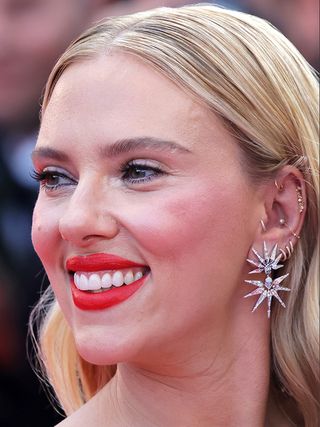
Name of piercing: Orbital
Where on the ear: An orbital piercing can be in a variety of placements. An orbital piercing is when you have two separate but parallel piercings that are connected with a ring. It is very similar to the industrial piercing except it’s with a ring and not a barbell.
Healing time: Dependent on placement
Pain scale: Depends on placement
Cost: Piercing fees range from £25-£30 per piercing.
Piercing technique: This is pierced with a needle.
What types of earrings suit this area? "I love to see this piercing fitted with a plain solid gold hoop. It's a very eye-catching piercing so I like pairing it with something quite minimal," says Jabbar.
13. Anti-Tragus Piercing
Name of piercing: Anti-Tragus
Where on the ear: Below the tragus, parallel to where your first lobe would sit
Healing time: 6-12 months on average
Pain scale: 6/10
Cost: Piercing fees range from £25-£30 per piercing
Piercing technique: This area is pierced with a needle.
What types of earrings suit this area? "A curved barbell or plain hoop is the most suitable jewellery choice for this piercing. If fitted with a chain charm would be a great way to dress this piercing up a little more," says Jabbar.
Next up, One of the World's Leading Ear Piercers Wants You to Stop Making These Mistakes

Eleanor Vousden is the beauty editor for Who What Wear UK. She was previously deputy editor at Hairdressers Journal, health writer at Woman & Home and junior beauty editor at beauty website Powder. She has also contributed to Wallpaper and Elle Collections with written and styling work.
Working as a beauty journalist since 2015 after graduating in fashion journalism at the London College of Fashion, she has been highly commended at the BSME Talent Awards for her work on Powder and also contributed to the title winning Website of the Year at the PPA Awards.
Eleanor’s journalistic focus is to provide readers with honest and helpful beauty content. Through words, video and live broadcast, she has interviewed several celebrity makeup artists, hairstylists and top dermatologists throughout her career, as well as celebrities such as Sarah Jessica Parker and Scarlett Johansson. She has a particular interest in finding solutions for acne and eczema, which she has experienced firsthand. She has also amassed a large collection of fragrances and can never say no to a new candle.
When she’s not writing or testing the latest beauty product or treatments, she’s on the seafront in her hometown of Brighton and Hove, where she lives with her partner and her miniature dachshund.
-
 We’re Beauty Editors—5 “Dated” Nail Colours We’re Avoiding in 2024
We’re Beauty Editors—5 “Dated” Nail Colours We’re Avoiding in 2024Plus, the five we're replacing them with.
By Grace Lindsay
-
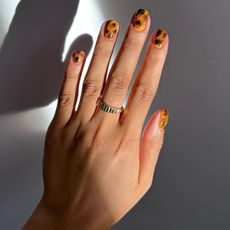 I'm Calling It: This Forgotten Nail Trend Will Have a Major Revival in 2024
I'm Calling It: This Forgotten Nail Trend Will Have a Major Revival in 2024Even Hailey Bieber is a fan.
By Grace Lindsay
-
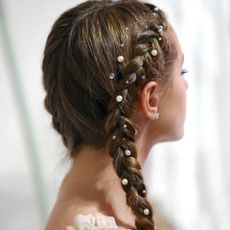 Ring in the New Year (and Turn Heads) in These Ultra-Chic Hairstyles
Ring in the New Year (and Turn Heads) in These Ultra-Chic HairstylesThere's a look for any type of party.
By Dale Arden Chong
-
 Forget the Trends—This Low-Maintenance Bob Is the Most Timeless Cut of Them All
Forget the Trends—This Low-Maintenance Bob Is the Most Timeless Cut of Them AllCall the salon!
By Eleanor Vousden
-
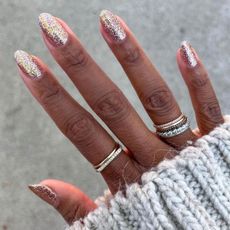 These Expensive-Looking Nail Designs Are Perfect for New Year's Eve
These Expensive-Looking Nail Designs Are Perfect for New Year's EveStart 2024 as you mean to go on.
By Grace Lindsay
-
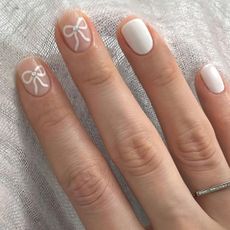 These Classy Christmas Nail Designs Will Earn You So Many Compliments
These Classy Christmas Nail Designs Will Earn You So Many ComplimentsWho doesn't love a chic festive mani?
By Grace Lindsay
-
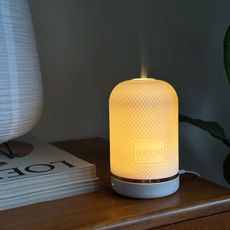 Sorry, Candles—I'm Replacing You With One of These 13 Luxurious Diffusers
Sorry, Candles—I'm Replacing You With One of These 13 Luxurious DiffusersYes, I said it.
By Grace Day
-
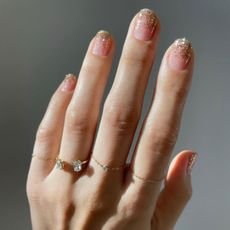 This Quick, Easy Nail Trend Makes It Look Like You've Spent Hours at the Salon
This Quick, Easy Nail Trend Makes It Look Like You've Spent Hours at the SalonIt's perfect for Christmas, too.
By Grace Lindsay
